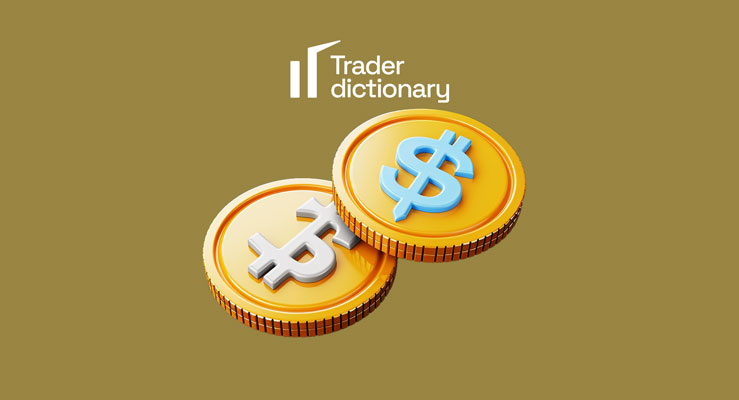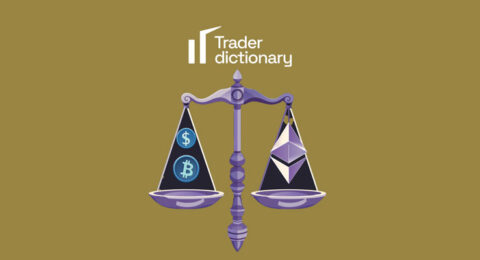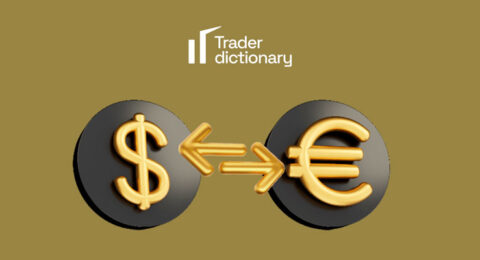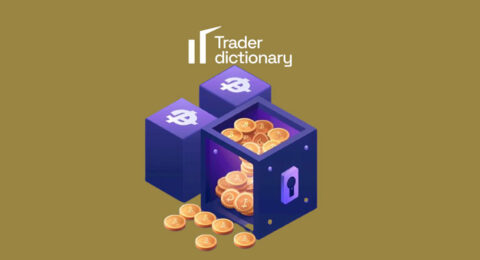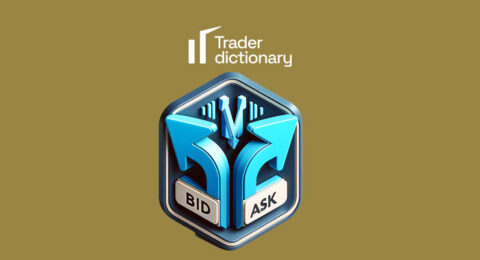In the world of forex investment, understanding spread is not only key to optimizing profit but also crucial for minimizing risk. This article will provide you with an in-depth look at the spread in forex, how it affects your trades, and effective strategies to manage it. Whether you are a novice investor or have experience, the information we share today will open new understandings and help you advance further on your investment journey. Let’s explore together!
What is Spread in Forex?
Spread in Forex is a concept that anyone venturing into the world of foreign exchange must understand. Simply put, the spread is the difference between the buying and selling prices of a currency pair. In other words, it’s the cost that investors have to pay for each transaction. I often think of it as a kind of ‘insurance’ fee that you pay to protect your investment.
Imagine you are trading the EUR/USD pair. The buying price might be 1.1200 and the selling price 1.1205. That difference of 0.0005 is the spread. It directly impacts the profit and loss in each of your trades. A lower spread means higher profit, whereas a higher spread increases your trading costs.
In reality, the spread is not always fixed. It can fluctuate depending on market conditions, market volatility, and even the broker’s policies. Sometimes, during periods of high market volatility, the spread can significantly widen, and that’s when your risk increases. Knowing how to manage the spread and understanding it in each situation will help you minimize risk and optimize profit in your Forex trading.
How to Calculate Spread in Forex
Calculating Spread is quite simple, but understanding it deeply requires acumen and experience.
Spread is calculated by taking the difference between the Bid price (buy price) and the Ask price (sell price) of the currency pair. For example, if the Bid price of EUR/USD is 1.1200 and the Ask price is 1.1205, then the spread is 5 pips. This unit, pips, as you know, is a fundamental factor in calculating profit and loss in Forex.
However, the spread is more than just a simple number. It directly reflects the liquidity of the market as well as risk. The higher the liquidity, the lower the spread, and vice versa. During times of significant market volatility, such as when important economic news is released, the spread can increase significantly. This needs to be carefully considered in your trading strategy.
I always emphasize to my readers that monitoring and analyzing the spread is key to success in Forex trading. A good trader is not only someone who can calculate the spread but also someone who knows how to use that information to make accurate and timely decisions.
What Does Spread Mean in Trading?
Spread in Forex trading is not just a simple number, but it has a much deeper significance in shaping our investment strategies. Spread, as you know, is the difference between the buy and sell prices of a currency pair. But behind that number is a larger picture of the market.
A low spread typically suggests that the market is highly liquid, has less volatility, and carries lower risk. This is ideal for investors who prefer stability and safety. Conversely, a high spread usually appears during times of strong market volatility, such as when major economic events occur. At such times, risk also increases, but so does the opportunity for higher profits for those who like to take risks.
For me, closely monitoring the spread not only helps optimize profits but is also a crucial part of risk management. Understanding the spread lets you know when to enter the market, when to pull back, and how to smartly allocate your investment capital. Every move in Forex must be carefully considered, and understanding the spread is one of the key factors that help you navigate safely and effectively on the challenging path of investment.
Types of Spread in Forex
Fixed Spread
In the Forex world, Fixed Spread is an important concept that investors need to understand:
Fixed Spread does not change according to market conditions, making it easier to predict transaction costs.
- Often preferred by new investors and those who dislike uncertainty from volatile markets.
- Suitable for long-term trading strategies where stability and predictability are prioritized.
- Fixed Spread is usually higher than variable spread under normal market conditions.
- Risk: In case of large market fluctuations, brokers may not be able to maintain the fixed spread, leading to slippage.
- Some brokers offering fixed spreads may require a large initial deposit or maintain a high account balance.
- Fixed Spread may not accurately reflect the current market liquidity, thus may not be the best choice in every trading situation.
Variable Spread
Variable Spread in Forex is an important factor that investors need to pay attention to:
Variable Spread changes according to market conditions, reflecting market liquidity and volatility.
- Usually lower than fixed spread under normal market conditions, but can significantly widen during high volatility periods.
- Suitable for experienced traders who can analyze the market and make quick decisions.
- Provides better opportunities to take advantage of short-term price fluctuations.
- Requires vigilance and tight risk management due to the unpredictable nature of the spread.
- Understanding the factors affecting the spread, such as economic news and changes in central bank policies, is essential.
- Higher potential for slippage in volatile market conditions, especially when significant news is released.
Traders need to determine their risk tolerance to decide whether to trade under variable spread conditions or not.
Fixed Spread vs. Variable Spread: Which is Better?
When considering between Fixed Spread and Variable Spread, each has its own advantages and disadvantages, suitable for specific trading strategies:
- Fixed Spread is more predictable, helping new traders and those who prefer stability plan their trades more confidently.
- Variable Spread is lower under normal market conditions, providing opportunities to optimize profits, especially for experienced traders.
- Fixed Spread is usually higher than the average of Variable Spread but offers peace of mind with unchanged transaction costs.
- Variable Spread more accurately reflects the actual market situation but may pose challenges in predicting and managing risk.
- For investors who prefer stability and avoid high risks, Fixed Spread might be a better choice.
- Those with market analysis skills and a penchant for risk might find Variable Spread more suited to their trading style.
- The decision to choose between the two types of Spread should be based on investment goals, trading strategy, and individual risk tolerance.
Carefully consider the trading conditions and Spread policies of each broker before making a decision.
Understanding High Spread and Low Spread
High Spread is a situation where the difference between the buy and sell prices of a currency pair is large. This usually occurs in low liquidity market conditions or during strong market fluctuations. Some key points to note:
- High Spread increases transaction costs, affecting your profit.
- It often appears during important news events or outside the main trading hours. High Spread sometimes reflects uncertainty or high risk in the market.
- Conversely, Low Spread occurs when the difference between the buy and sell prices is small. This usually happens in high liquidity markets with little fluctuation.
- Key features include: Low Spread helps reduce transaction costs, facilitating profit-making.
- Common during main trading hours when market liquidity and supply and demand are stable. Attracts traders who prefer short-term trading and scalping.
Understanding High Spread and Low Spread helps investors make wise decisions when choosing the timing and strategy of trading, thereby minimizing risk and optimizing profit in Forex trading.
Factors Influencing Spread
Spread is not a fixed number but varies based on several factors:
- Market Liquidity: Spread tends to narrow when the market has high liquidity. This happens due to the presence of more buyers and sellers, reducing the difference between the Bid and Ask prices.
- Market Volatility: During times of strong market volatility, such as when important economic news is released, the Spread can widen significantly. This reflects increased uncertainty and higher risk.
- Broker Policies: Each broker has its own policy regarding Spread. Some may offer fixed spreads, while others offer variable spreads based on market conditions.
- Trading Time: Spread can also change depending on the time of day. For example, during main trading hours when the market is active, Spread is usually lower than during less active times.
- Economic News and Events: Significant economic events, like decisions on interest rates by central banks, can cause large fluctuations in Spread.
Thus, understanding these factors helps investors make informed trading decisions and minimize risks associated with Spread in Forex trading.
Points to Note About Spread Changes Investors Should Know
- Changes in Spread across different trading sessions: Spread is usually lower during the London and New York sessions due to high liquidity and rises during the Sydney and Tokyo sessions.
- Impact of Economic News: Important economic reports, such as unemployment rates and central bank interest rate decisions, can cause sudden increases in Spread.
- Market Volatility: During times of strong market volatility, such as in an economic crisis, Spread can widen significantly, reflecting high risk.
- Broker Policies: Each broker has its own policies regarding Spread and may change it based on market conditions and internal policy.
- Understanding Spread in different currency pairs: Spread can vary significantly between currency pairs, so choosing the right pair for your trading strategy is necessary.
Monitoring and understanding these changes will help investors react promptly, minimizing risk and maximizing profit opportunities in Forex trading.
Conclusion
Concluding the article “Minimizing Risk: Understanding Forex Spread,” we hope the information we provided has given you a deeper insight into Spread in Forex and how it impacts your trading. Remember, understanding and closely monitoring Spread will help you minimize risk and maximize profit opportunities in the foreign exchange market. Continue to follow and learn, as each new piece of information is a solid step forward on your path to success in the Forex world. We wish you successful trading and always stay updated with new knowledge from us!



